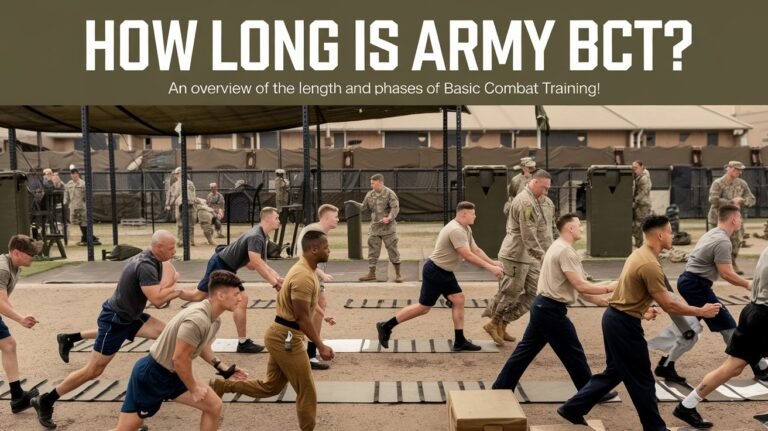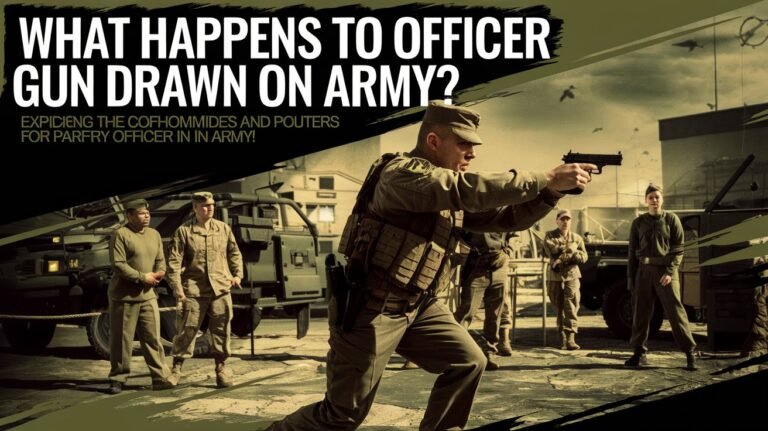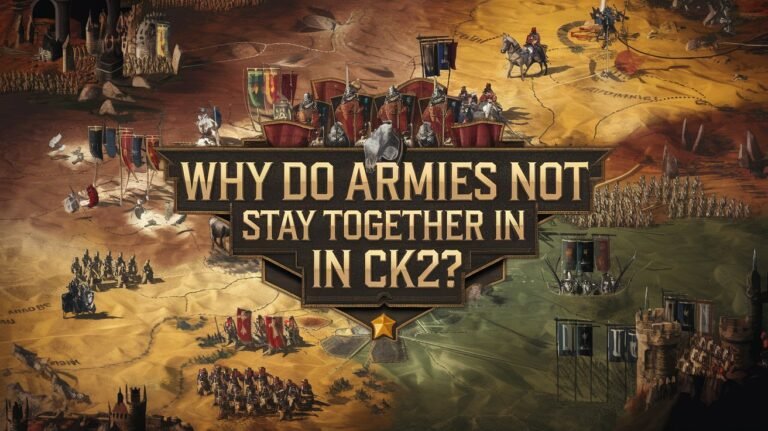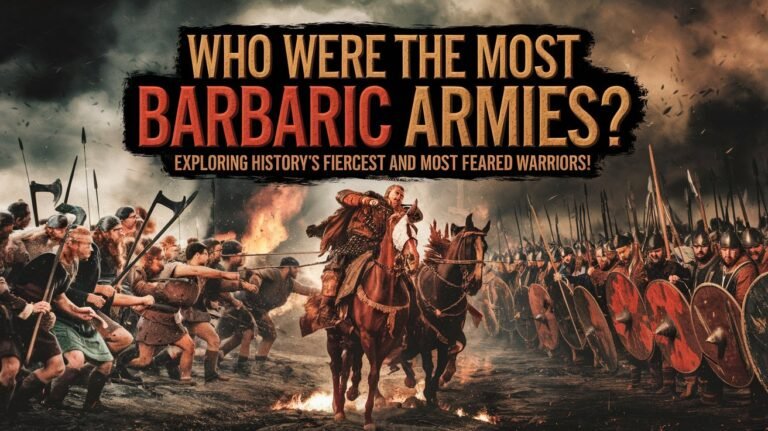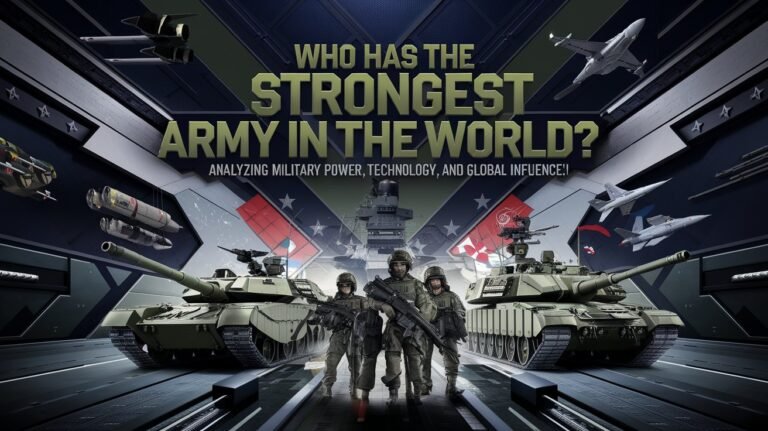Which Army Had The Best Tank Destroyer Units Ww2?
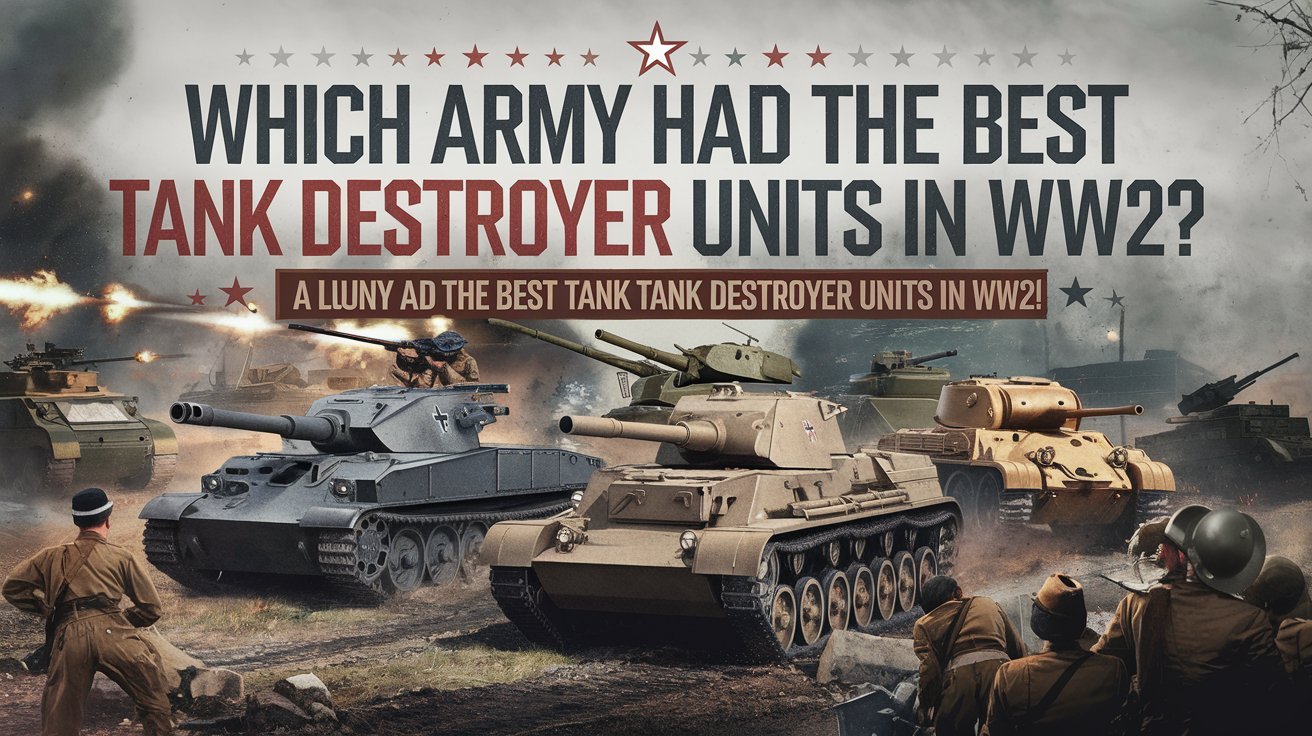
World War II saw the importance of specialized anti-tank units, known as tank destroyers. They played a key role in fighting enemy armor on the battlefield. The German Jagdpanther, the American M36 Jackson, and the Soviet SU-85 and SU-100 were among the most effective.
These units were made to be mobile and powerful against enemy tanks. They were crucial in the war.
The tank destroyer concept was not exclusive to one army. Yet, the performance and impact of these units differed among military forces. Looking at the tank destroyer units of major World War II powers can give us insights. It helps us see which army had the best tank destroyer units during the war.
Origins of Tank Destroyer Combat Doctrine
The tank destroyer idea started after the Fall of France in 1940. This led to the U.S. Army creating a special anti-tank branch. These units were fast, agile, and used ambush tactics.
They had open turrets for better sight and movement, but less protection. The U.S. Army’s motto for these units was “Seek, Strike, Destroy.”
Evolution from Anti-Tank Units
During World War II, over 100 tank destroyer battalions were formed. More than half of them fought in battles. In August, a plan was made for 220 anti-tank battalions.
The first nine units were armed with 37 mm M3 anti-tank guns and 75 mm M1897 guns on half-tracks.
Strategic Role in Military Planning
By November 27, 1942, General Marshall wanted 53 new anti-tank battalions. The tank destroyer force had to include African Americans. Two black battalions were first converted, then four in 1942.
Mobile Defense Concept Development
The tank destroyer doctrine was about being offensive and mobile. Battalions had a headquarters, a reconnaissance company, and three tank destroyer companies. Each company had 37 mm and 75 mm self-propelled guns, and anti-aircraft guns.
By January 1943, the Army reduced the number of soldiers in tank destroyer battalions by 25%. But they kept the same combat strength. Fifteen battalions were told to switch to towed guns in early 1943 for a more defensive role.
German Jagdpanther: The Ultimate Hunter
The German Jagdpanther was named by Hitler himself. It was a powerful tank destroyer that scared the Allies during World War II. It was built on the Panther tank chassis and had an 88mm PAK 43 gun. This gun could easily go through the armor of even the toughest enemy tanks.
The Jagdpanther had sloped armor that was 80 to 100mm thick. This made it very hard to hit. Its gun was also very powerful. But, because of Allied bombing, only about 400 Jagdpanthers were made. This limited its impact in the war.
Jagdpanther used its speed and power to sneak up and destroy enemy tanks. It was hard to see because of its low profile and camouflage. This made it a strong german jagdpanzer on both the Eastern and Western Fronts.
| Specification | Value |
|---|---|
| Armor Thickness (Front) | 80-100mm |
| Armor Thickness (Side) | 50mm |
| Armor Thickness (Top) | 16mm |
| Main Armament | 88mm PAK 43 L/71 gun |
| Crew | 5 |
| Production | Approximately 400 units |
Which Army Had the Best Tank Destroyer Units WW2
World War II saw many armies create effective tank destroyer units. The German Jagdpanther, American M36 Jackson, and Soviet SU-85 and SU-100 were all strong. But, to find the best, we need to look at their fight performance, kill rates, and how they affected the battlefield.
Combat Performance Analysis
The German Jagdpanther was known for its 88mm gun and strong armor. American M36 Jackson units were also very capable, thanks to new ammunition. The Soviet SU-85 and SU-100 were fast and had good firepower, but their armor wasn’t as strong.
Kill-to-Loss Ratios
The Jagdpanther had the best kill-to-loss ratio. For example, at the Battle of El Guettar, American tank destroyers took out 38 German tanks but lost a lot. The Jagdpanther’s power and armor helped it get high kill rates on the Eastern Front.
Battlefield Impact Assessment
The impact of these tank destroyer units was huge, no matter who had the “best.” The Jagdpanther, M36 Jackson, and SU-85 and SU-100 were key in many battles. Their smart use and the bravery of their crews helped fight enemy tanks and support their armies’ goals.
American M36 Jackson Tank Destroyer
The M36 Jackson was the most powerful U.S. tank destroyer in World War II. It was armed with a 90mm M3 gun. This vehicle was based on the reliable M10 chassis and entered service in September 1944.
It had a crew of five and was as powerful as the German 88mm KwK 36. This made it a strong threat to enemy tanks.
The M36 Jackson had an open turret design. It was a result of the U.S. tank destroyer battalions’ evolving tactics. Over 1,700 of these vehicles were made.
The first ones arrived just in time for the Battle of the Bulge. Its 90mm gun could hit German Panther and Tiger tanks from far away. This made it a deadly asset on the battlefield.
After World War II, the M36 Jackson saw action in the Korean War. It was effective against North Korean T-34/85 tanks. Over 100 M36 Jacksons were sent to South Korea as part of the Military Assistance Program.
Soviet SU-85 and SU-100 Designs
During World War II, the Soviet Union created powerful tank destroyers to fight German armor. The SU-85 and SU-100 were key designs, based on the T-34 tank. They were made to counter the German tanks on the Eastern Front.
Technical Specifications
The SU-85 had an 85mm gun, while the SU-100 had a 100mm gun. These tank destroyers were well-armored and fast. They could take on German tanks like the Panther and Tiger.
The SU-100 weighed 31.6 tonnes and was 9.45 meters long. It could reach 48 km/h on roads. It could travel 250 km on roads and 140 km off-road.
Combat Effectiveness
The soviet su-85 tank destroyers and SU-100s were vital in world war ii anti-tank warfare. Their guns and speed helped them destroy German tanks. This helped the Soviet Union win the war.
By July 1945, 2,335 SU-100s were built. This shows how important they were in the Soviet army.
Production Numbers
- A total of 4,976 SU-100 units were built.
- China got 99 SU-100s after Soviet forces left Dalian in 1950.
- Algeria had 50 SU-100s in reserve, and Morocco had 25, with 8 working.
- North Korea used 100 SU-100s, and Vietnam had 100 too.
- Yemen had 70 SU-100s, and Bulgaria used 100.
- China had 300 SU-100s, Cuba had 100, and Czechoslovakia had 200.
- Egypt had 150 SU-100s, Hungary had 50, and Iraq had 250.
- Mongolia had 10 SU-100s, and North Yemen had 50.
- Poland had 25 or 26 SU-100s in the late 1960s, later withdrawn. Romania got 85 SU-100s by 1957, with 23-47 in reserve as of 2022.
- Syria had 80 SU-100s, and Yugoslavia had 40.
Armor Penetration Capabilities Comparison
World War 2 saw big steps in tank destroyer tech. Many armies built special tanks to fight the German tanks. How well these tank destroyers could get through armor was key to their success.
The German 88mm gun on the Jagdpanther was famous for its power. It could hit and take down even the heaviest enemy tanks from far away. The American M36 Jackson had a 90mm M3 gun, which was just as good. It could also take down the toughest German armor.
Soviet Union made strong tank destroyers too. The SU-100 had a 100mm gun that could get through the Panther and Tiger tanks’ armor. These tanks, along with the American and German ones, were important in World War 2’s armored battles.
The ability of tank destroyers to get through armor was very important. They had to be able to hit and destroy enemy tanks to do well in battle. This skill was crucial for their success in World War 2.
Tank Destroyer Crew Training Methods
The success of tank destroyer units in World War II relied on crew training. Both German and Allied forces created special training programs. These programs helped their panzer hunting tactics and allied tank hunters learn to fight enemy armor well.
German Training Programs
German tank destroyer crews got a lot of training. They learned ambush tactics and how to shoot accurately. They also learned how to hide and wait for the right moment to attack.
The Germans focused a lot on marksmanship. They made sure their crews could hit even the toughest tanks.
Allied Force Preparation
The Allies, like the U.S. Army, had special training for their tank destroyer units. The training covered skills like identifying targets and moving quickly. It also taught them to work together and be flexible.
This training paid off on the battlefield. Allied tank destroyer crews showed they could take on the German panzer hunting tactics. Their hard work and training were key to the Allies’ success.
Battle Tactics and Deployment Strategies
Tank destroyer units in World War II used many tactics to be effective. The U.S. Army focused on mobile defense and ambushes. German forces often set up tank destroyers in defensive spots or as mobile reserves.
The Soviet Union’s tactics changed over the war. They used both mobile and static positions. This balance helped them disrupt enemy armor while keeping losses low.
Over one hundred tank destroyer battalions were formed during the war. More than half saw combat. Each battalion had 36 vehicles, ready to face different armored threats.
As the war went on, the number of tank destroyer battalions decreased. This was due to a 25% reduction in manpower. Fifteen battalions were converted to towed guns in early 1943.
| Operation | British, Canadian, and Polish Casualties | Remarks |
|---|---|---|
| D-Day to End of August in Normandy | 83,000 (16,000 killed) | Significant casualties in the Normandy campaign |
| Operation “Perch” near Caen | 250 (6th Green Howards) | Heavy losses in the attempt to capture Cristot village |
| Operation “Epsom” | 2,331 (15th Scottish Division) | Substantial casualties for the Scottish Division |
| Operation “Charnwood” | 3,817 (British and Canadian) | Significant losses in the effort to liberate Caen |
| Operation “Goodwood” | 314 tanks knocked out (140 destroyed) | Substantial losses in armored vehicles |
Tank destroyer units were key in World War II’s armored battles. Their speed, firepower, and versatility were crucial. They played a big role in both Allied and Axis strategies, helping to control the battlefield.
Tank Destroyer Production Statistics
In World War II, tank destroyers were key in fighting tanks. Many countries made these special vehicles. Each army had its own production numbers, showing their unique military plans.
Manufacturing Challenges
Germany had big problems making tank destroyers like the Jagdpanther. The Allies bombed their factories, making it hard to make many vehicles. This limited Germany’s tank destroyer use on the battlefield.
Supply Chain Impact
The United States and Soviet Union could make more tank destroyers. They had bigger factories and better supply chains. This helped them have more anti-tank units, changing the war’s outcome.
| Tank Destroyer Model | Production Numbers |
|---|---|
| M6 37mm GMC | 5,380 units (April to October 1942) |
| M3 75mm GMC | 2,202 units (February 1942 to April 1943) |
| M10 (3″ gun) | 6,406 units (September 1942 to December 1943) |
| M18 Hellcat | 2,507 units (July 1943 to October 1944) |
How many tank destroyers were used depended on supply chains and resource choices. These factors greatly affected the war’s strategy and outcome.
Famous Tank Destroyer Engagements
World War II saw many battles where tank destroyers played key roles. In 1943, US tank destroyers at El Guettar repelled a German attack. This showed how valuable these units were in anti-tank warfare.
German Jagdpanthers were also crucial in the Allied breakout from Normandy. They had an 88mm cannon that could pierce the armor of American Sherman tanks. Their armor and firepower made them a tough foe for the Allies.
Soviet SU-85 and SU-100 tank destroyers were vital on the Eastern Front. They were mobile and well-armored, offering crucial support against German tanks. Their success showed who had the best tank destroyer units in WW2.
These battles proved the importance of tank destroyers in anti-tank warfare. Their design and firepower made them a powerful force on the battlefield. They could take down even the most armored enemy tanks.
Technical Innovations and Design Evolution
During World War II, tank destroyer designs kept getting better. They added new tech to fight in the changing armored warfare world. Improvements in guns, armor, and how they moved were key. This led to the creation of powerful guns like the German 88mm and American 90mm.
The war taught a lot about tank destroyers. Leaders were not happy with the first designs and equipment. They needed to fight against heavy German tanks. So, they made guns bigger and better. This helped tank destroyers hit harder and fight better.
Looking at tank destroyer development in World War II shows it’s not just about tech. It’s also about doctrine, experience, people, and war pressures. The need for new equipment was fast. It showed how military strategy, tactics, and tech all work together.
Questions and Answers
Which army had the best tank destroyer units in World War II?
Many armies had effective tank destroyer units in World War II. The German Jagdpanther, American M36 Jackson, and Soviet SU-85 and SU-100 were among the top. Their success depended on crew training, tactics, and technology.
How did the tank destroyer concept emerge and evolve during World War II?
The tank destroyer idea started after the Fall of France in 1940. The US Army then created a special anti-tank branch. These units were fast, agile, and used ambush tactics. They were designed for speed and visibility, not protection.
What was the significance of the German Jagdpanther tank destroyer?
Hitler named the Jagdpanther, based on the Panther chassis, with an 88mm PAK 43 gun. It had thick armor and was very effective against Allied tanks. Its design made it a strong opponent.
How did the American M36 Jackson tank destroyer perform in World War II?
The M36 Jackson was the most powerful US tank destroyer in World War II. It had a 90mm M3 gun and entered service in September 1944. It was fast and had a powerful gun, making it a formidable opponent.
What were the capabilities of the Soviet SU-85 and SU-100 tank destroyers?
The Soviet SU-85 and SU-100 were powerful tank destroyers. The SU-85 had an 85mm gun, and the SU-100 had a 100mm gun. They were based on the T-34 tank and were effective against German armor.
How did the armor penetration capabilities of different tank destroyers compare?
Different tank destroyers had varying armor penetration capabilities. The German 88mm gun on the Jagdpanther was very effective. The American 90mm M3 gun on the M36 Jackson was also powerful. Soviet designs like the SU-100 could defeat heavy German armor.
How did the training and tactics of tank destroyer crews differ among the major armies?
Training for tank destroyer crews varied among armies. German crews were trained in ambush tactics and gunnery. The US Army developed specialized training for their tank destroyer units. Crew training was key to their success.
What were the notable engagements involving tank destroyers during World War II?
There were several notable battles involving tank destroyers in World War II. The battle of El Guettar in 1943 saw US tank destroyers repel a German attack. German Jagdpanthers were effective during the Allied breakout from Normandy. Soviet SU-85 and SU-100 units played key roles in major offensives.
How did tank destroyer designs evolve throughout World War II?
Tank destroyer designs evolved with new technologies during World War II. Improvements in guns, armor, and mobility were constant. The development of powerful anti-tank guns like the German 88mm and American 90mm greatly improved tank destroyer capabilities. Post-war designs were shaped by World War II experiences.


